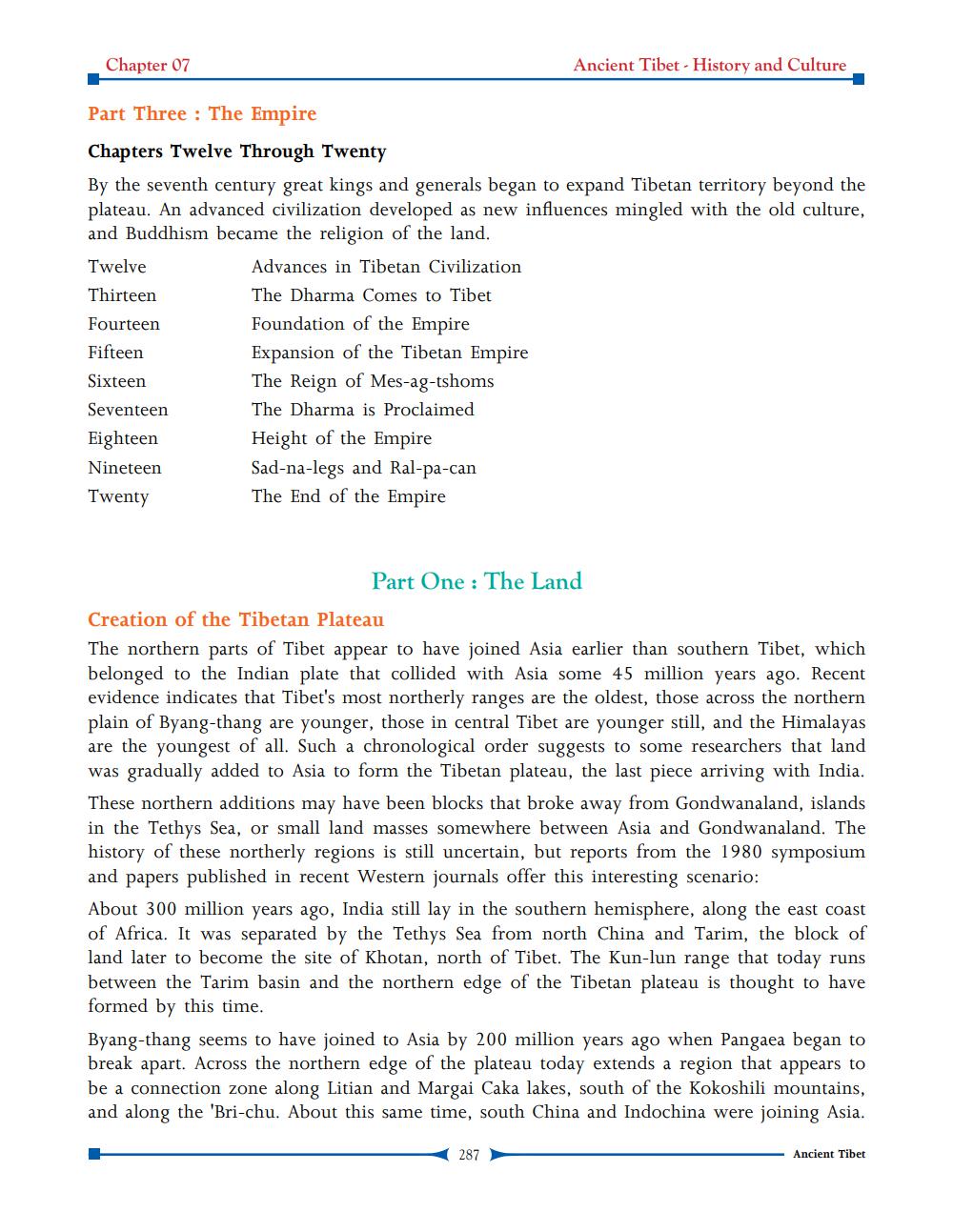________________
Chapter 07
Ancient Tibet - History and Culture
Part Three : The Empire
Chapters Twelve Through Twenty By the seventh century great kings and generals began to expand Tibetan territory beyond the plateau. An advanced civilization developed as new influences mingled with the old culture, and Buddhism became the religion of the land. Twelve
Advances in Tibetan Civilization Thirteen
The Dharma Comes to Tibet Fourteen
Foundation of the Empire Fifteen
Expansion of the Tibetan Empire Sixteen
The Reign of Mes-ag-tshoms Seventeen
The Dharma is Proclaimed Eighteen
Height of the Empire Nineteen
Sad-na-legs and Ral-pa-can Twenty
The End of the Empire
Part One : The Land Creation of the Tibetan Plateau The northern parts of Tibet appear to have joined Asia earlier than southern Tibet, which belonged to the Indian plate that collided with Asia some 45 million years ago. Recent evidence indicates that Tibet's most northerly ranges are the oldest, those across the northern plain of Byang-thang are younger, those in central Tibet are younger still, and the Himalayas are the youngest of all. Such a chronological order suggests to some researchers that land was gradually added to Asia to form the Tibetan plateau, the last piece arriving with India. These northern additions may have been blocks that broke away from Gondwanaland, islands in the Tethys Sea, or small land masses somewhere between Asia and Gondwanaland. The history of these northerly regions is still uncertain, but reports from the 1980 symposium and papers published in recent Western journals offer this interesting scenario: About 300 million years ago, India still lay in the southern hemisphere, along the east coast of Africa. It was separated by the Tethys Sea from north China and Tarim, the block of land later to become the site of Khotan, north of Tibet. The Kun-lun range that today runs between the Tarim basin and the northern edge of the Tibetan plateau is thought to have formed by this time. Byang-thang seems to have joined to Asia by 200 million years ago when Pangaea began to break apart. Across the northern edge of the plateau today extends a region that appears to be a connection zone along Litian and Margai Caka lakes, south of the Kokoshili mountains, and along the 'Bri-chu. About this same time, south China and Indochina were joining Asia.
287
Ancient Tibet




